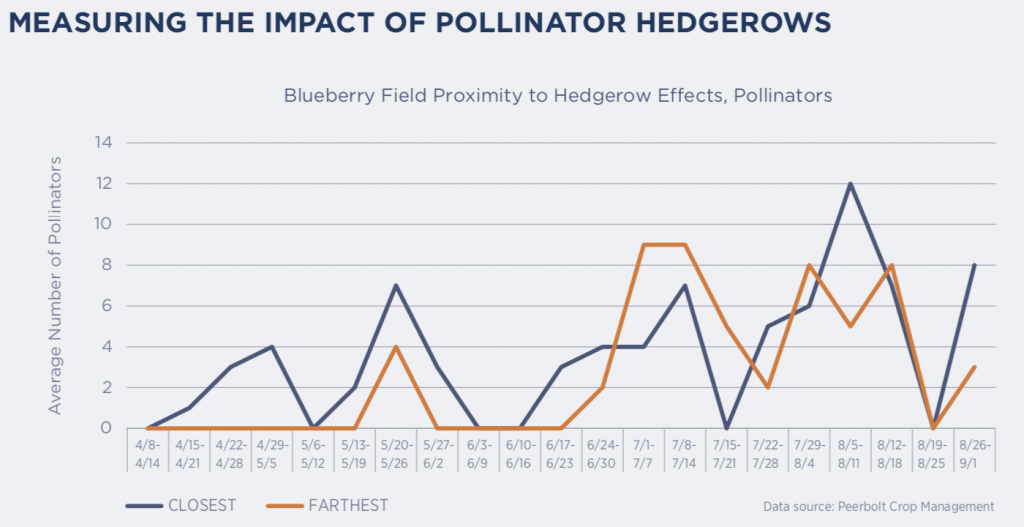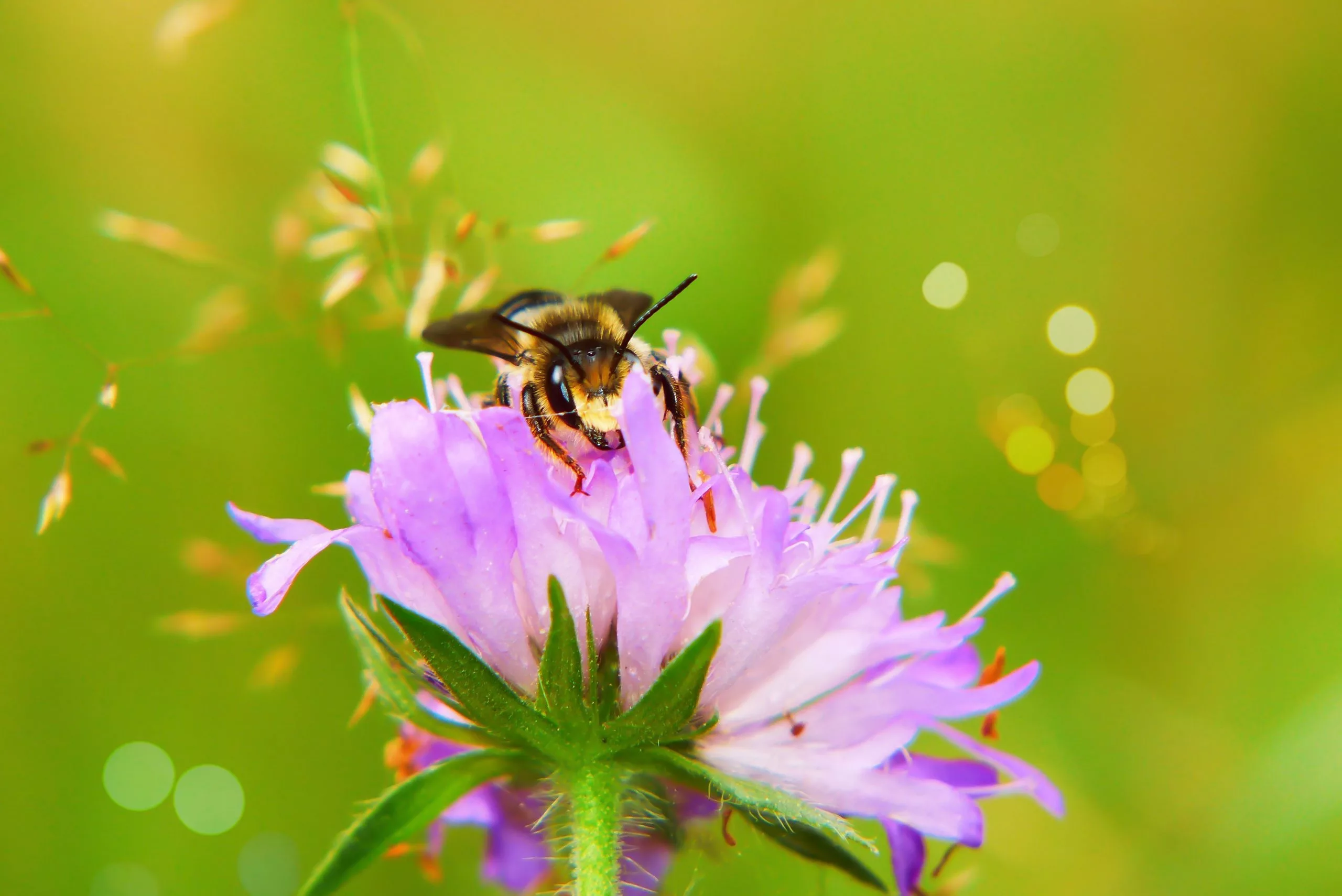Over 30 percent of the foods and beverages we consume every day — that’s one out of every three bites — rely on or benefit from a pollinator. From blueberries, apples, almonds, pumpkins, strawberries, and even the grass cows graze, pollinators produce $29 billion in US crop value and over $500 billion globally. After working in agriculture and sustainability for over 20 years, I’ve developed a deep appreciation for all creatures that buzz and contribute to the life-sustaining milk, juice, fruit, vegetables, and nuts that I love to eat. The health of these insects is imperative to our survival, so I’m dedicated to the restoration and renewal of native wildlife habitats that allows pollinators to prosper.
At Agriculture Capital, it’s our belief that native pollinator activity has the potential to both boost harvest yields and simultaneously reduce farming expenses and need for contract pollinator services, all while improving overall ecosystem health. In partnership with The Xerces Society for Invertebrate Conservation, we implemented practices that are beginning to restore native pollinator habitats and cultivate beneficial insect abundance in Oregon’s Willamette Valley. It’s our hope that in sharing our success, we can help agriculture at scale to become a practice that can help restore native pollinator ecosystems.
A Better Home for Pollinators
At the core of our efforts to create better homes for native pollinators is planting native plant hedgerows, meadows, and restored riparian zones and natural areas on our blueberry farms. The native plants we used in these meadows and hedgerows were carefully selected to give pollinators plants to pollinate beyond the blueberry bloom window. Extending the pollination season allows pollinators to have food and shelter for much of the year, and to nest in the off-season in the hollow cavities of the diverse plant life on the farm.
In addition to planting tactics, our pest management methods prioritize pollinator health. We do not spray crop protectants during bloom time when the pollinators are most susceptible to ingestion, and we utilize a robust monitoring program that calculates the impact of a spray versus risk to pollinators before determining if we apply any. There are many sprays that we will never use to avoid any harm to pollinators. When necessary, we use innovative electrostatic sprayers to apply precisely at night, to mitigate exposure to pollinators at work during the daytime. We make all decisions on these farms with pollinator health as a top priority, because we believe that these insects make for thriving natural ecosystems that will ultimately produce the best food for people and our environment.

It’s Working
To understand the impact of our efforts to bring back crop-supporting native pollinator activity to our blueberry farms, field technicians measure and monitor pollinator number and species diversity. We have identified at least six different species of native pollinators on our blueberry farms in addition to numerous beneficial predators, and believe we will eventually attract as many as 20 unique pollinator species. We are also trying to measure how proximity to hedgerows affects pollinator abundance. Last year, at the beginning of the season during the blueberry bloom window, researchers were able to document a statistically significant increase in the number of pollinators in fields closest to hedgerows. These results show us that our hedgerows are achieving their intended promise, providing a better environment for pollinators that will in turn pollinate our blueberries year after year.
Beyond Organic, Bee Better
Agriculture fundamentally relies on natural systems, and we have a responsibility as growers to to care for the landscapes and ecosystems that make agriculture itself possible. Loss of habitat, exposure to harmful pesticides, and spread of diseases are causing significant declines, and it’s imperative that we as food producers do our part to restore environments and create better homes for pollinators. I am optimistic about the future for native pollinators after extensive collaboration with groups like The Xerces Society for Invertebrate Conservation. Xerces’ pollinator protectors have developed the Bee Better™ Certification to promote pollinator conservation in agriculture, and to improve consumer awareness and purchasing to support pollinator health. The Bee Better production standards are science-based, field-tested, and third-party verified by Oregon Tilth, guaranteeing that the actions farmers take actually improve pollinator wellbeing.
I am grateful for the partnership and guidance of Xerces as we continue to implement native pollinator protection efforts on our farms, and are thrilled that two of our blueberry operations, located in Oregon’s Willamette Valley, have become Bee Better Certified. We believe that regeneratively produced food is a major growth opportunity for agricultural commodities, and that as this industry grows, so will the demand for a pollinator-focused agricultural production. In today’s marketplace, consumers are demanding transparency from brands, particularly food providers, and this shift is driving the industry in a direction that favors sustainability. As consumers continue to purchase for the planet, it’s up to the food industry to produce and market high-quality, regenerative, good-for-you products. The Bee Better Certified seal lets consumers know that their purchase supports pollinators and the farmers that protect them. In addition to purchasing organic produce, the Bee Better Certified seal should be a priority when buying goods, to support the restoration and protection of bees, butterflies, and beneficial insects.





